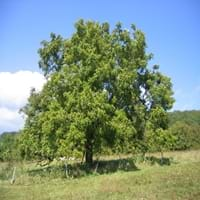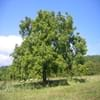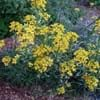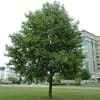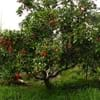Life Span
Perennial
Perennial
Type
Tree
Bulb or Corm or Tuber
Origin
Europe, Eastern Europe, Southern Europe, Russia/Siberia, Iran, Central Asia, Southern Asia, Western Asia, India, Nepal, China
Southern Africa, South Africa
Types
Black walnut
Cusick's camas, large camas
Number of Varieties
Not Available
Habitat
Cold Regions, Hills, Hillside
meadows, moist forests, Open Plains
USDA Hardiness Zone
4-8
8-10
AHS Heat Zone
7-1
Not Available
Sunset Zone
1a, 1b, 2a, 2b, 3a, 3b, 4, 5, 6, 7, 8, 9, 14, 15, 16, 17, 18, 19, 20, 21
21,22
Habit
Oval or Rounded
Rosette/Stemless
Flower Color
Yellow green
White, Yellow, Red, Blue, Purple, Pink, Lavender, Violet
Flower Color Modifier
Bicolor
Bicolor
Fruit Color
Green, Brown
Not Available
Leaf Color in Spring
Green, Copper
Green
Leaf Color in Summer
Dark Green
Light Green
Leaf Color in Fall
Dark Green, Yellow green
Several shades of Green
Leaf Color in Winter
Not Available
Light Green
Leaf Shape
Pinnate
Long slender
Plant Season
Spring, Summer, Fall
Spring, Winter
Sunlight
Full Sun
Full Sun, Partial Sun
Growth Rate
Medium
Medium
Type of Soil
Clay, Loam, Sand
Loam
The pH of Soil
Acidic, Neutral
Acidic, Neutral
Soil Drainage
Well drained
Well drained
Bloom Time
Late Spring, Early Summer
Early Spring, Spring, Late Winter, Indeterminate
Tolerances
Drought, Frost
Black Walnut Toxicity, Rabbit, Shade areas
Where to Plant?
Ground
Container, Ground, Pot
How to Plant?
Budding, Seedlings
chipping, Offsets, scooping, Twin scaling, Vegetative
Plant Maintenance
Medium
Low
Watering Requirements
Requires watering in the growing season, Water Deeply, Water when top layer of soil becomes dry
Medium
In Summer
Lots of watering
Lots of watering
In Spring
Moderate
Moderate
In Winter
Average Water
Average Water
Soil pH
Acidic, Neutral
Acidic, Neutral
Soil Type
Clay, Loam, Sand
Loam
Soil Drainage Capacity
Well drained
Well drained
Sun Exposure
Full Sun
Full Sun, Partial Sun
Pruning
In Early Autumn, Prune to stimulate growth, Remove dead leaves
Remove damaged leaves, Remove dead branches, Remove dead leaves
Fertilizers
fertilize in spring, Nitrogen
All-Purpose Liquid Fertilizer, General garden fertilizer, Time release fertilizer
Pests and Diseases
Anthracnose, Armillaria mellea, Blight, Caterpillars, Crown gall, Crown rot, fungus, Powdery mildew, Red blotch
Pests and diseases free
Plant Tolerance
Drought, Frost
Black Walnut Toxicity, Rabbit, Shade areas
Flowers
Insignificant
Showy
Flower Petal Number
Not Available
Single, Double, Semi-Double
Foliage Texture
Coarse
Medium
Foliage Sheen
Glossy
Glossy
Attracts
Not Available
Insects
Allergy
Severe allergen
Asthma
Aesthetic Uses
Not Used For Aesthetic Purpose
Bouquets, Cottage Garden
Beauty Benefits
Good for skin and hair
For treating wrinkles, Remove blemishes, Skin Problems
Edible Uses
Yes
Sometimes
Environmental Uses
Absorbs greenhouse gases, Absorbs huge amounts of CO2, Air purification, Amazing growth rate, Erosion control, Food for birds, Food for insects, Forms dense stands, Nesting sites for birds, Prevent Soil Erosion, Shadow Tree, Shelter for wildlife, Windbreak
Air purification, Forms dense stands, Very little waste
Medicinal Uses
Anemia, Asthma, Cancer, Cough, Diarrhea, Menstrual Disorders, Urinary tract problems
Leucoderma, Urinary problems
Part of Plant Used
Fruits, Seeds
Bulbs, Root
Other Uses
Economic Purpose, Used as a dye, Used as firewood, Used As Food, Used for its medicinal properties
Animal Feed, Decoration Purposes, Showy Purposes
Used As Indoor Plant
No
Yes
Used As Outdoor Plant
Yes
Yes
Garden Design
Edible, Feature Plant, Shade Trees
Bedding Plant, Container, Cutflower, Mixed Border, Rock Garden / Wall
Botanical Name
JUGLANS regia
Hyacinthus orientalis
Common Name
English Walnut
Hyacinth, common hyacinth, garden hyacinth, dutch hyacinth
In Hindi
अंग्रेजी अखरोट
ह्यचीन्थ
In German
Englisch Walnut
Hyazinthe
In French
Anglais Noyer
jacinthe
In Spanish
Inglés nuez
jacinto
In Greek
Αγγλικά Καρυδιά
υάκινθος
In Portuguese
Inglês Walnut
jacinto
In Polish
orzech włoski
hiacynt
In Latin
Nucis anglicus
et hyacinthinas,
Phylum
Tracheophyta
Magnoliophyta
Class
Magnoliopsida
Liliopsida
Family
Juglandaceae
Liliaceae
Clade
Angiosperms, Eudicots, Rosids
Angiosperms, Monocots
Tribe
Juglandeae
Not Available
Subfamily
Juglandoideae
Scilloideae
Number of Species
Not Available
Importance of English Walnut and Wild Hyacinth
Want to have the most appropriate plant for your garden? You might want to know the importance of English Walnut and Wild Hyacinth. Basically, these two plants vary in many aspects. Compare English Walnut and Wild Hyacinth as they differ in many characteristics such as their life, care, benefits, facts, etc. Every gardener must at least have the slightest clue about the plants he wants to plant in his garden. Compare their benefits, which differ in many ways like facts and uses. The medicinal use of English Walnut is Anemia, Asthma, Cancer, Cough, Diarrhea, Menstrual Disorders and Urinary tract problems whereas of Wild Hyacinth is Leucoderma and Urinary problems. English Walnut has beauty benefits as follows: Good for skin and hair while Wild Hyacinth has beauty benefits as follows: Good for skin and hair.
Compare Facts of English Walnut vs Wild Hyacinth
How to choose the best garden plant for your garden depending upon its facts? Here garden plant comparison will help you to solve this query. Compare the facts of English Walnut vs Wild Hyacinth and know which one to choose. As garden plants have benefits and other uses, allergy is also a major drawback of plants for some people. Allergic reactions of English Walnut are Severe allergen whereas of Wild Hyacinth have Asthma respectively. Having a fruit bearing plant in your garden can be a plus point of your garden. English Walnut has showy fruits and Wild Hyacinth has no showy fruits. Also English Walnut is not flowering and Wild Hyacinth is not flowering . You can compare English Walnut and Wild Hyacinth facts and facts of other plants too.
